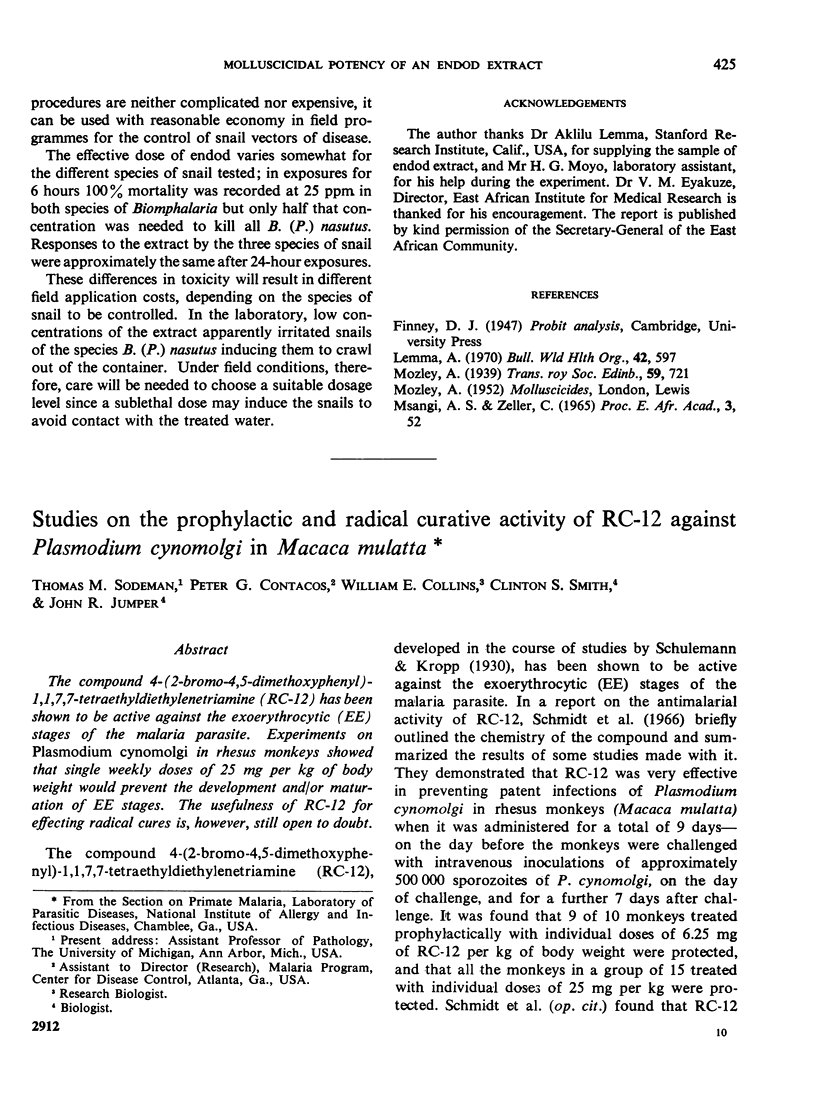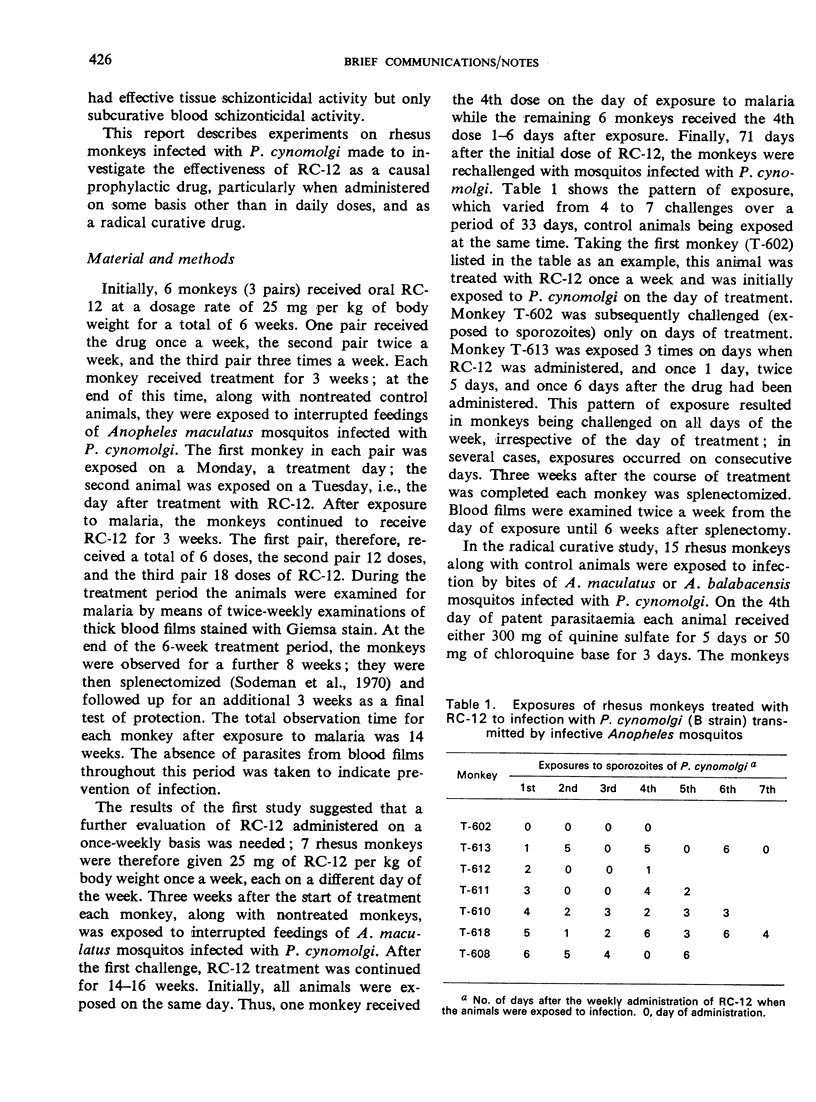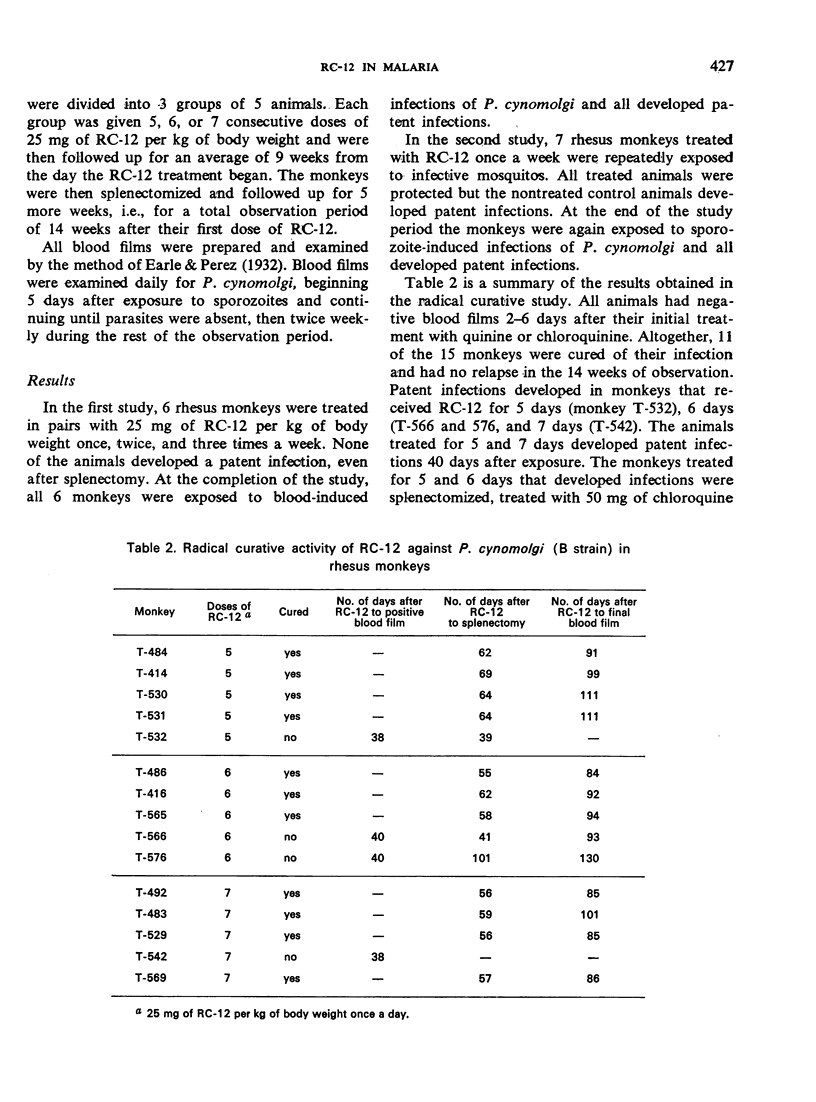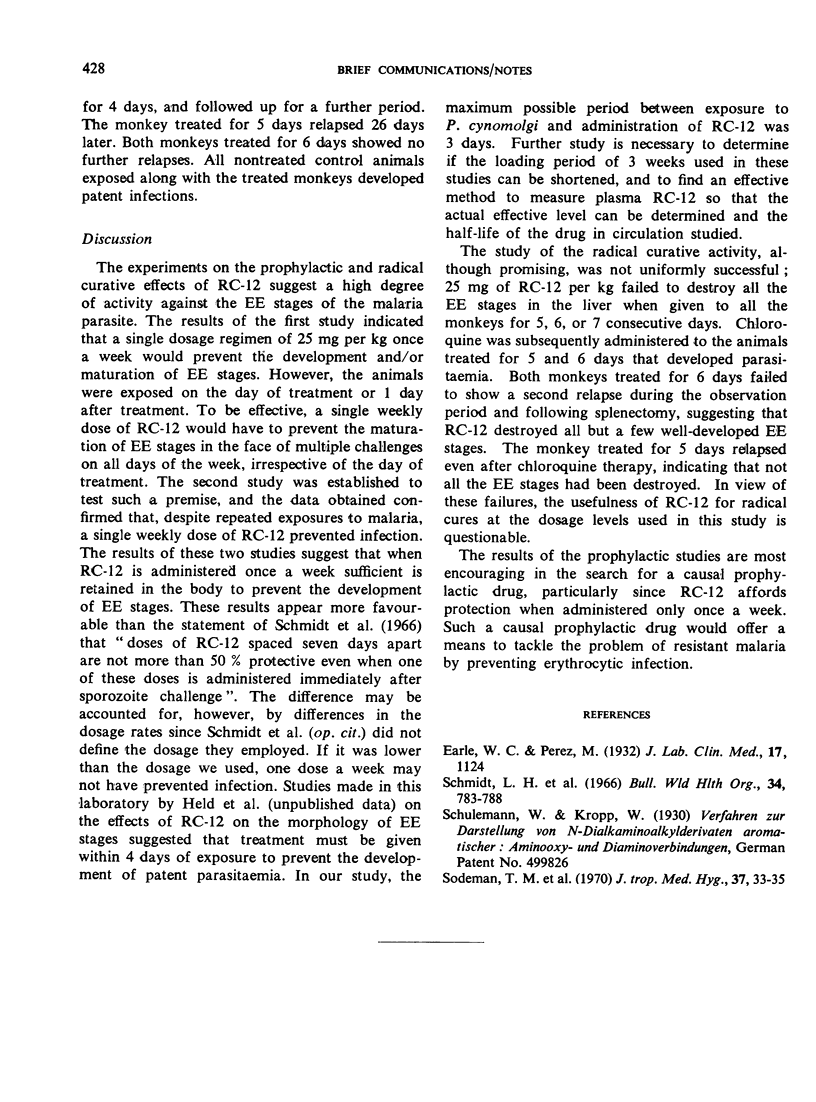Abstract
The compound 4-(2-bromo-4,5-dimethoxyphenyl)-1,1,7,7-tetraethyldiethylenetriamine (RC-12) has been shown to be active against the exoerythrocytic (EE) stages of the malaria parasite. Experiments on Plasmodium cynomolgi in rhesus monkeys showed that single weekly doses of 25 mg per kg of body weight would prevent the development and/or maturation of EE stages. The usefulness of RC-12 for effecting radical cures is, however, still open to doubt.
Full text
PDF



Selected References
These references are in PubMed. This may not be the complete list of references from this article.
- Schmidt L. H., Rossan R. N., Fradkin R., Woods J., Schulemann W., Kratz L. Studies on the antimalarial activity of 1,2-dimethoxy-4-(bis-diethylaminoethyl)-amino-5-bromobenzene. Bull World Health Organ. 1966;34(5):783–788. [PMC free article] [PubMed] [Google Scholar]


